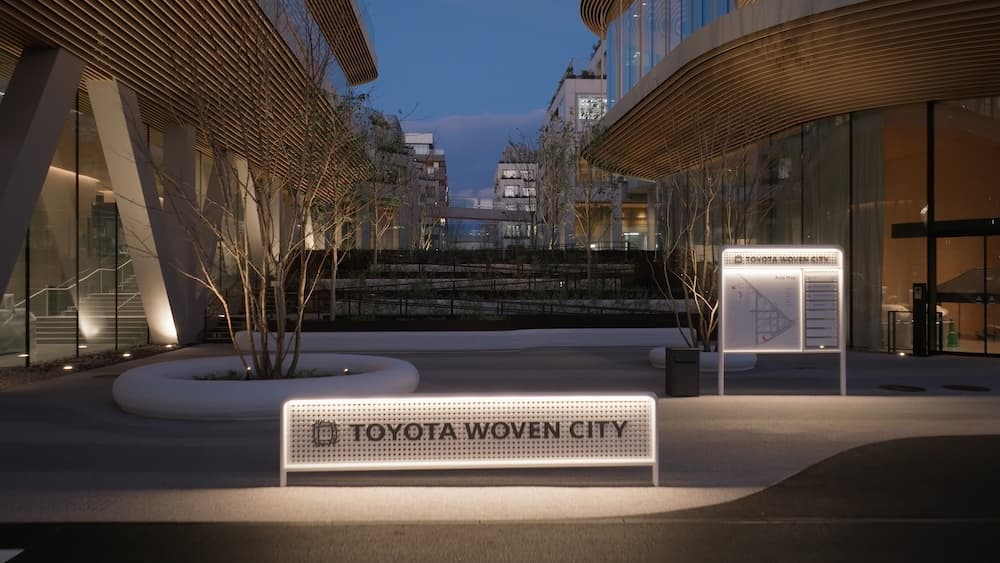Toyota Woven City
The Challenge
Building a Futuristic $10 Billion Smart City near Mt. Fuji
Woven City is Toyota’s bold experiment in what a city can be. Built on the former Higashi-Fuji Plant site in Susono, at the foot of Mt. Fuji, it’s designed as a Living Laboratory™ — a fully functioning urban space where mobility, energy, goods, and information move in harmony.
The city is human-centered, ever-evolving, and home to a mix of residents, researchers, and innovators. It’s where new technologies are tested not in labs, but in daily life — on streets, in homes, and across the community.
The city is human-centered, ever-evolving, and home to a mix of residents, researchers, and innovators. It’s where new technologies are tested not in labs, but in daily life — on streets, in homes, and across the community.
Toyota calls it “for others,” a philosophy that began with founder Sakichi Toyoda’s life-changing loom invention and now drives this $10B project. Woven City brings together global startups, research institutes, and Toyota’s own teams to co-create the next generation of movement.
From autonomous vehicles to smart homes and renewable energy, it’s a proving ground for ideas that could redefine how we live, work, and move — not just in Japan, but everywhere.
From autonomous vehicles to smart homes and renewable energy, it’s a proving ground for ideas that could redefine how we live, work, and move — not just in Japan, but everywhere.



Engineering the Core of a City
I was involved in building the tools and systems that keep Woven City moving.
- Led a high-impact team
- Built a city-wide library
- Streamlined how devs work
Gateway
Inventor Portal – Where Ideas Meet the City
The Inventor Portal is the digital front door for innovators shaping the future of Woven City. From day one, my goal was to make it effortless for researchers, startups, and technologists to submit proposals, track experiments, and collaborate with city teams.
I led the architecture and development, implemented flexible BFF APIs, and designed workflows that let ideas move from concept to real-world testing without bottlenecks.
I led the architecture and development, implemented flexible BFF APIs, and designed workflows that let ideas move from concept to real-world testing without bottlenecks.
This wasn’t just another web app — it’s a living bridge between visionaries and the city itself. The portal connects inventors to resources, simplifies onboarding, and gives teams the tools to focus on innovation instead of paperwork.
Every click and screen was built to reduce friction, accelerate feedback, and make sure the best ideas get into the streets of Woven City faster.
Every click and screen was built to reduce friction, accelerate feedback, and make sure the best ideas get into the streets of Woven City faster.
It's all about speed
Brought the Inventor Portal from idea to launch without slowing down. Kept everything clear, simple, and moving.
Easy to work with and gets things done. Clear communication, smooth delivery.
- 92%
on-time feature delivery with agile OKR alignment
- 100%
onboarding workflows launched without issues
- 15%
boost in dev velocity with workflow improvements
- 2
core web services integrated through APIs
Clarity
Keeping Everyone on the Same Page
The Inventor Portal was a cross-team effort with a lot of moving parts. My role was making sure our team stayed aligned with PdMs, designers, and partner teams so work didn’t get lost in translation. Regular check-ins, clear priorities, and quick feedback loops kept scope under control and avoided the usual back-and-forth that slows projects down. The result — less noise, more progress.
Flow
Making the Pieces Fit
Our team’s main build was the BFF layer — the bridge between backend services and the frontend. We made sure the data was clean, consistent, and exactly what the UI needed. That meant coordinating with other teams so integrations landed smoothly and nothing broke on launch day. It wasn’t about building the flashiest feature — it was about making sure all the pieces worked together.
Unity
One Library to Build Them All
When multiple teams are building for the same platform, inconsistency creeps in fast. I kicked off the Component Library to stop that drift before it became a problem.
Starting from scratch, I set the architecture, roadmap, and standards so everyone could pull from the same source.
Starting from scratch, I set the architecture, roadmap, and standards so everyone could pull from the same source.
The library didn’t just ship — it got adopted. We onboarded teams quickly, replacing ad-hoc UI with a shared, reliable toolkit. That meant less time reinventing buttons and forms, and more time focusing on features that matter. Now, when a change is made in one place, it improves the experience everywhere.
Foundation
Starting from Zero, Building for All
Before the library existed, each team solved the same UI problems in their own way. Buttons looked different. Forms behaved differently. The experience felt stitched together instead of seamless. I kicked off the Component Library to fix that — starting from a blank slate, defining the architecture, and mapping out a roadmap that everyone could trust. It wasn’t just about building components; it was about building a foundation that could scale without failing.
Adoption
Turning a Good Idea into Daily Habit
A library isn’t a success until teams actually use it. I worked closely with developers and designers to make adoption painless — answering questions, tweaking components based on feedback, and removing friction wherever it appeared. Within weeks, the library became the default for building new features. It saved time, kept designs consistent, and gave teams confidence they were shipping the right thing the first time.
Don't get left behind during the AI revolution
While your competitors gain AI advantages, every day of delay costs you market share